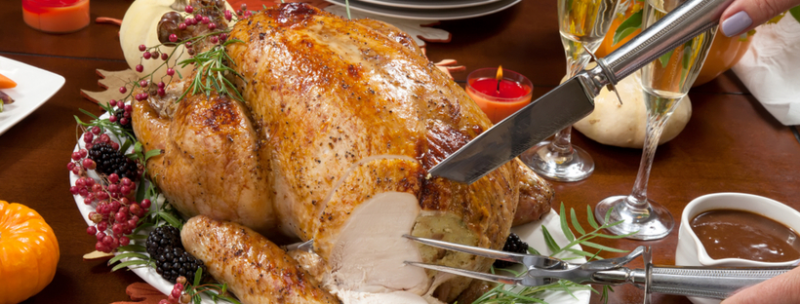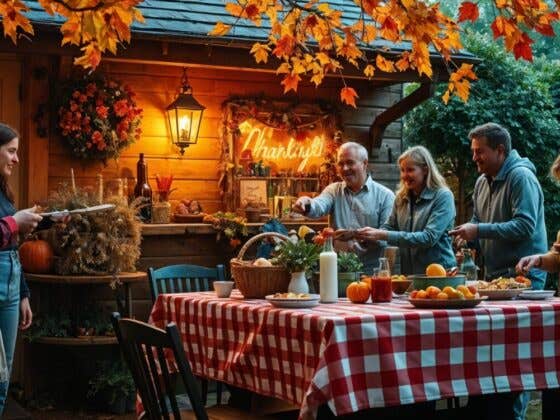The height of winter, the delicate white snow a soft blanket on your covers for outdoor furniture, is the perfect time to cook up some comforting meals for the whole family to enjoy. And the perfect base for a hearty winter meal? Fowl of every feather. Whether it’s grilled or glazed, you should consider the many possibilities of including fowl dishes in your cold weather menu.
Buy Local

Buying your birds from a local butcher or farmer’s market is the best of both worlds for freshness and saving money. Make it a point this winter to only purchase locally raised and butchered poultry to support your community while getting to savor the flavor of local game.
Glazed Goose

Goose is one of the most popular fowl to serve in the winter months, and for good reason. These birds offer rich flavour and enough meat to satisfy up to a family of 8. Embrace the cozy spices of winter with this recipe for orange glazed goose. You’ll need:
- 4.5 to 5.5 kg goose
- 3 quarts cold water
- 1 cup Kosher salt
- .5 cup sugar
- .5 teaspoon ground cardamom
- .25 teaspoon ground cinnamon
- 1/2 bay leaf
- .5 teaspoon cracked black pepper
- Dash of allspice
- .5 cup orange juice
- .5 cup orange marmalade
- .5 cup dry white wine, or champagne
Wash your goose and trim all excess fat. Place in a large cooking bag in a large covered container to brine.
Heat 1 cup of water in a saucepan. Add salt, sugar, and spices until salt and sugar are dissolved. Cool and add cold water.
Pour mixture over the goose and add more cold water to cover the goose if needed. If using a cooking bag, twist and tie tightly so the goose is covered with the brine. Refrigerate for 12 to 24 hours.
Remove goose from the brine. Pat the goose dry. Heat oven to 375 F. Prick goose all over with a fork to aerate the skin. Place goose (breast side down) on a rack in a large roasting pan.
Roast for 20 minutes. Using tongs, flip the goose breast-side up and roast for another 20 minutes. Mix orange juice, marmalade, and wine or champagne in a saucepan. Bring to a simmer then remove from heat.
Remove the goose from the oven and pour off all fat. Reduce heat to 162°C and continue roasting for about 20 minutes per pound, brushing lightly with the glaze about every 30 to 40 minutes.
The juices should run clear when the thigh is pierced with a sharp knife. A meat thermometer inserted in the meat of the thigh should read about 82° C.
Delicious Duck
If goose isn’t your game of choice, consider serving duck instead. Rich in proteins and essential omega fatty acids, duck is a great choice for anyone looking to pack in the protein this winter while the winds rage across your covers for outdoor furniture.
Keep in mind that like steaks that sizzle after removing the grill cover, duck meat is frequently cooked to medium or medium-rare instead of all the way through. This allows the full flavors of the meat to come to life.
Quaint Quail

One of the most unique types of fowl you can cook up this winter is quail. This bird has a delicate flavor that can be enjoyed all year round, such as in summer after pulling off the patio furniture covers. Here’s a more winter-friendly recipe you can enjoy for the time being:
- 4 garlic cloves, crushed
- 2 teaspoons ground cinnamon
- 2 teaspoons ground cumin
- 5 tablespoons rosewater
- 80ml (1/3 cup) lemon juice
- 60ml (1/4 cup) olive oil
- 8 small quail, butterflied
- 6 tablespoons rose petal jam
- Dried rose petals, to garnish
Place half the garlic, 1 1/2 teaspoons cinnamon, cumin, rosewater and 2 tablespoons of lemon juice and oil in a glass dish. Stir. Add quail and refrigerate overnight.
Preheat your indoor grilling pan to high. Remove quail from marinade and grill for 2-3 minutes on each side, basting with marinade, until cooked through.
Add jam, remaining garlic, cinnamon, lemon juice and oil in a saucepan over low heat and cook very gently, stirring until mixed and heated through.
Serve quail with sauce and scattered rose petals.
Spice Up Your Life
Don’t ever be afraid to spice things up when it comes to cooking fowl. While the usual suspects of salt and pepper can go a long way in making a bird delicious, consider spicing outside the box with more adventurous options such as cayenne pepper, Allspice, and lemon pepper.
Don’t Be Chicken

As a poultry staple, chicken is widely popular and presents endless culinary possibility. Keep things sweet this winter with Mango chicken thighs cooked to perfection.
- 600g boneless chicken thighs
- 200g mango chutney
- 6 coriander sprigs, leaves picked, chopped
- 6 at-leaf parsley sprigs, leaves picked, chopped
- 1/4 tsp ground turmeric
- 1 tsp ground cumin
- Juice of 1/2 lemon
- Olive oil
Begin by trimming excess fat from the chicken thighs. In a bowl, mix chutney, herbs, and spices. Add the chicken and turn to coat thoroughly. Marinate in the fridge overnight or for at least 4 hours.
Heat a grill plate or chargrill pan over medium heat. As it’s warming up, squeeze the lemon juice over the chicken, then sprinkle with salt before cooking.
Rub the grill plate with a paper towel dipped in oil. Cook the chicken thighs for at least 5 minutes each side until browned and cooked through. Transfer to a warm plate. over loosely with foil and rest for 10 minutes.
Fry Away
Whether you use an air fryer or more old fashioned methods, frying is always a viable (and delicious) method of preparing fowl this winter. If you’re not keen on filling your kitchen with the smell of oil, consider frying outside among your custom covers and patio furniture covers- just don’t forget to bundle up first!
Lovely Leftovers

The best part about cooking up fowl this winter? The delicious leftovers. Fowl stored in the fridge can be used in stews or sandwiches for next week’s lunch. Remember to keep everything airtight in sealed containers, and dispose of after a week of refrigeration.

















Recent Comments